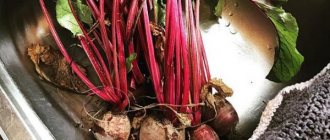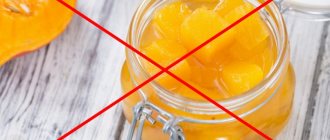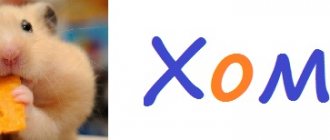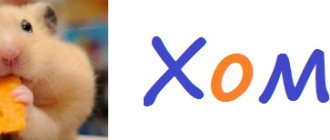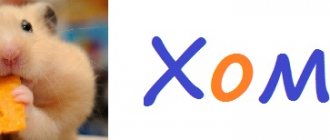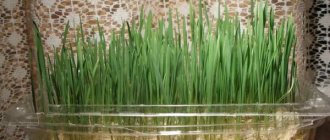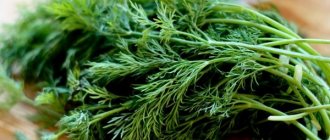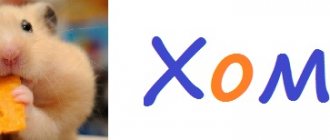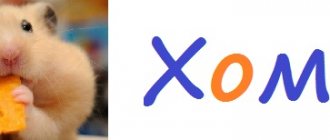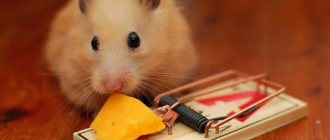The quality of nutrition largely determines the health and life expectancy of an animal. Before offering your pet a new product, in our case potatoes, a caring owner will ask himself whether hamsters can have potatoes. There is no definite answer to this question, since this vegetable can either be useful for the animal or harm it. Let's consider all the options.
How are potatoes good for hamsters?
In fact, potatoes are a natural food for hamsters. Therefore, domestic rodents are happy to eat pieces of tubers placed in the feeder. Wild hamsters living in natural conditions build huge storerooms underground in which they store supplies for the winter. Potatoes can often be found among a variety of vegetables in burrows. This high-calorie, starchy root vegetable helps wild rodents survive the cold season of the year. Raw tubers contain many substances useful for animals: ascorbic and folic acid, niacin, potassium, calcium, fluorine, B vitamins. Hamsters need all these elements to maintain normal functioning of the body.
Therefore, the question of whether hamsters can eat potatoes should be given a positive answer. Animals that often eat root vegetables almost never suffer from vitamin deficiency, diseases of the circulatory system, or constipation. Raw potatoes improve the functioning of the intestines, stimulate digestion, and reduce the acidity of gastric juice. It is especially recommended to treat pregnant females with the vegetable. Potatoes prevent the occurrence of various pathologies in embryos developing in the womb. It is useful to give the root vegetable to sick animals to improve the physical condition of the body and ease the symptoms of the disease.
Feed groups
The quality of pork products directly depends on the quality of the food on which the pig is fed. All feeds are divided into three groups according to their effect on meat quality.
- The first group of food products allows us to obtain high quality meat products.
- The second group has less useful qualities and is suitable for obtaining varieties of meat of average quality.
- The third group includes poor food, which directly affects the quality of meat. However, it can be safely fed to young animals up to 60 kg in weight.
For premium meats
Feeds of this group allow you to obtain pork of the highest quality and dense, grainy lard. To fatten premium quality meat pigs, the diet must include green feed and mixed feed. These include:
- Juicy vegetables and root crops. Potatoes, carrots, pumpkin, sugar beets.
- Green food. Shchiritsa, nettle, alfalfa, sainfoin, clover.
- Cereals. Barley, millet, peas, rye.
- Roughage. Hay flour from legumes (alfalfa, clover, sainfoin).
- Fermented milk products and meat waste.
For medium grades of meat
This group of feeds includes lower quality food products. They can make up up to half of the total feed mass, but it is advisable not to exceed this amount. With constant feeding of pigs with these products, meat and lard gradually lose their taste. Such foods can be beneficial (for example, corn gives animals a lot of energy, but contains almost no protein), but it is advisable to introduce their diet together with the first group. These include:
- corn;
- buckwheat;
- wheat and rye bran.
Can hamsters eat raw potatoes?
A good owner is always concerned about whether the hamster can eat raw potatoes. There is no need to doubt: the vegetable is useful for a small animal. Potatoes not only contain a large amount of vitamins and minerals, but also allow the rodent to sharpen its teeth. Therefore, potato tubers, pieces of fresh carrots and other hard vegetables should always be in the feeder. If the animal does not have the opportunity to grind its incisors on rough food, then they grow to an unnatural size and deform the jaw. The raw root vegetable is rich in ascorbic acid, which is important for preventing the development of vitamin deficiency. A pet that regularly eats potatoes is cheerful and active and feels good.
But, despite the significant benefits of potatoes for the health of the animal, you need to treat your hamster with a raw vegetable with caution. The root vegetable contains a lot of starch - a polysaccharide consisting of glucose molecules. This simple carbohydrate, when consumed in excess, inevitably leads to obesity. Therefore, you should not give potatoes to an overweight rodent. You should not feed vegetables to an animal with normal body weight, otherwise the pet will quickly gain weight. Nutrition should be moderate and balanced. You should not treat your animal to potatoes that have turned green from lying in the light for a long time. Green tubers accumulate solanine, a toxic substance that negatively affects the functioning of the nervous system and can cause diarrhea in rodents.
The benefits of fruit for rodents
The composition contains a large amount of vitamins and microelements.
Magnesium and potassium have a positive effect on the animal’s musculoskeletal system, its cardiovascular, nervous and urinary systems.
Iron increases hemoglobin content, helps relieve fatigue, hunger and restore strength.
Phosphorus is necessary to strengthen the animal’s bones and teeth.
The main thing is to use the product in moderation. Digestion is normalized, the blood vessels in the rodent’s body will become flexible and elastic.
Morning time is most favorable for eating fruits
When choosing a banana for your pet, pay attention to the peel. It should be yellow and strong
Rotten, blackened fruits should not be given.
You can start feeding your pet these fruits in the second month of life.
Do hamsters eat boiled potatoes?
Many rodent breeders doubt whether hamsters can eat boiled food, including potatoes. In fact, small pets enjoy feasting on both raw and cooked foods: pasta boiled without salt, pumpkin, carrots, and potatoes. But we must remember that the eyes growing on potato tubers should not be given to animals, as they are extremely poisonous. Animals can be poisoned and seriously injured. Therefore, only thoroughly peeled potatoes are allowed to be placed in the feeder. Boiled vegetables are nutritious and healthy food for rodents. It contains a lot of riboflavin, pyridoxine, pantothenic acid, biotin and other vitamins. Potatoes must be included in the diet of furry pets to protect them from diseases of the cardiovascular system.
The hamsters' menu must include a variety of boiled vegetables, rich in vitamins and minerals, easily digestible, and helping to improve digestion. Animals love soft and tasty boiled or baked potatoes, but you cannot feed them. Boiled root vegetables contain even more starch than the raw product. Therefore, overly fat animals should not be given potatoes. But it is recommended to treat rodents who, for some reason, are underweight, and old people who have difficulty gnawing solid food with boiled vegetables. It is strictly forbidden to feed your pets fried potatoes. When preparing food for hamsters, do not use salt, spices, butter or vegetable oil. You should not put the entire boiled tuber in the feeder at once; it is better to give food to small pets in small portions.
How to give correctly
As mentioned above, potatoes are safe for almost all breeds of hamsters, but this rule only applies if a few rules are followed. Only in this case can an optimal balance be achieved between starches, fats, vitamins and minerals, and this will ensure not only safety for health, but also help extend the lifespan and youth of the rodent.
To do this, you just need to adhere to the following requirements:
- raw vegetables are given only in small pieces and always without peels and sprouts;
- preference should be given to boiled potatoes, they should contain at least 60% of the total volume of the vegetable;
- give the tuber no more than once a week, the maximum portion for an adult animal should not exceed 30 g;
- Before giving your hamster raw slices of tubers, it is recommended to soak them in clean cold water for 1–2 hours, changing the liquid periodically. This will remove excess starch from the pulp, as well as accumulated nitrates and other toxins.
Important! It is forbidden to cook and feed green potatoes raw; they contain the dangerous toxin solanine, which even in small doses can lead to the death of a hamster.
Is it possible to treat Djungarian hamsters with potatoes?
Djungarian hamsters are gentle and sensitive creatures, their body is weakly resistant to many diseases. Fluffy pets often suffer from diabetes caused by excess weight, which greatly upsets their owners. To ensure that a Djungarian baby does not suffer from obesity and always remains cheerful and active, he must adhere to a fairly strict diet. Limiting heavy and high-calorie foods on the menu allows you to make your rodent’s life longer and more fulfilling, and reduce the risk of diabetes. Potatoes contain a large amount of starch, significantly increase the concentration of sugar in the blood, and provoke an increase in body weight. Therefore, it is better to avoid feeding Djungarian hamsters raw and especially boiled potatoes.
Precautionary measures
Adding a new product to the diet of dzhungarika requires some precautions:
- When offering your pet nuts, consider its age, breed and size. The smaller the animal, the smaller the portion should be.
- Do not serve peanuts in the shell. Putting food in the cheek pouches can cause injury to your hamster. Peanut shells can cut your baby's esophagus and stomach.
- Do not overfeed your pet. Peanuts and hazelnuts have a high fat content, which disrupts the functioning of the animal’s digestive system. By overfeeding your animal with high-calorie foods, you harm its health.
- The animal must eat natural products. Peanuts should not be given after heat treatment.
- The rodent's diet should be varied. Offer him a different product each time.
- Do not give sweet, salty or spicy foods. Salted peanuts are harmful to the kidneys and liver.
Nuts are a tasty and nutritious treat. They have properties that are beneficial to the health of the hamster. However, it should be remembered that not all fruits can be included in your pet’s diet. Follow the feeding rules, and your pet will be healthy, cheerful and active.
What potatoes should you not give to hamsters?
Green potatoes pose a great danger to hamsters. The root crop turns green from lying in the light for a long time. Tubers illuminated by the sun begin to produce the poison solanine, which is extremely harmful to humans and especially to small animals. It should be noted that in small doses, solanine does not have a negative effect on the body, sometimes even stimulates digestion and improves intestinal function. But in large quantities, the toxin causes significant damage to health. It is clear that it is enough for a tiny animal to eat a small piece of green potato to become poisoned. You can determine that a vegetable contains solanine not only by color, but also by taste. Poisonous potatoes are bitter and cause a sore throat when swallowed.
It is not advisable to treat hamsters with old and sprouted potatoes. Poor-quality and spoiled products often cause problems with the digestive tract. It is very useful to give rodents potatoes along with cucumbers, parsley, and dill. Fresh greens must be included in the diet of small pets. It is strictly forbidden to feed animals fried foods, potatoes with salt, seasonings, fat, sauce and other additives. Salt and fat are not just harmful, but even dangerous foods for rodents.
General recommendations for eating potatoes
Before you treat your pet to a healthy, tasty vegetable, rinse it thoroughly in water and carefully inspect it. If there are green areas or “eyes,” either carefully cut off all the green peel and the solid layer underneath, or simply take another tuber. It should be taken into account that solanine accumulates in the peel and under it during long-term storage, so if the vegetables have been lying around for several months, feed the baby the core of the tuber.
It is best to use vegetables that you grow yourself to feed your pet, so as not to expose the animal to the danger of being poisoned by chemicals. If you are not sure that the vegetables do not contain hazardous substances, cut them into pieces and soak in clean water for several hours. Under no circumstances should you treat your rodent to fried tubers. This food is not at all suitable for the animal, because it contains salt and a lot of fat.
Daily diet for a furry pet
Angoras are more picky about the quality of food than dwarfs or other dwarf rodents. Their daily diet should include not only cereal grains (oats, corn, millet) but also vitamins. Pet stores sell special food for pets, which contains a complex of useful substances. However, your pet can also get vitamins from fruits and vegetables, which it is advisable to include in his daily food.
Angora hamsters readily eat carrots, pumpkin, apples, lettuce and dandelion leaves, dill, and parsley. Rodents will also get the necessary substances from sunflower seeds and nuts. To replenish protein reserves, your pet can be fed with boiled liver and boiled chicken meat. The main thing is that all the food in the hamster's feeder is fresh.
You should feed your pet no more than twice a day. It is advisable to replenish the supply of drinking water in his home approximately once every two days.
From time to time it is necessary to conduct an audit of the fluffy's house and check what he has brought into his pantry. There should not be too much perishable food in a hamster’s diet, otherwise the consequences may be disappointing. A long-haired rodent can not only stain its coat with vegetables or fruits that have begun to rot, but also become seriously ill.
To avoid unpleasant consequences, it is necessary to exclude potatoes, cabbage leaves, garlic, onions, and citrus fruits from the Angora hamster’s diet. It is advisable to avoid various exotic fruits and fruits with seeds.
Since Angora hamsters are prone to obesity, their feeding should be done under the supervision of the owner. In the house the animal should have many accessories for active body movements.
Properties of boiled tubers
It is recommended to include heat-treated vegetables in the diet of rodents. Boiled or baked potatoes lose a relatively small amount of nutrients (especially if you cook them directly in the skin) and become more tender and easier to digest. So the answer to the question whether a hamster can have boiled or baked potatoes should be unequivocally positive, but it’s not that simple.
Tubers processed in this way contain an even greater percentage of starch than raw ones. So it is contraindicated to give boiled potatoes to overweight hamsters.
It is best to include boiled potatoes in the diet of elderly individuals who find it difficult to digest hard raw food. It is better to feed your pet small portions of treats. Salt or oil cannot be used in cooking.
Chicken or quail
Chicken yolk contains vitamins A, D, and E, polyunsaturated fatty acids. Vitamin D promotes the absorption of calcium, which strengthens bones. There is as much of it in eggs as there is in fish oil. The yolk contains iron.
Quail eggs contain five times more potassium and iron, 2.5 times more vitamins B1 and B2, vitamin A, niacin, phosphorus, copper, cobalt, and other amino acids.
If you have the opportunity to buy quail, because they are more expensive than chicken, you need to choose them. Quail eggs contain much more useful substances than chicken eggs. They have high nutritional value, quickly restore immunity after illness, strengthen blood vessels, and do not cause allergic reactions.
Although the ratio of beneficial nutrients in quail and chicken eggs is different, remember - they are all useful and valuable foods for a hamster.
When are potatoes ready to be pulled? | Home Guides
Posted by Tammie Painter Updated December 15, 2022
If you have a sunny spot in the garden with loose, fertile soil, you can grow your own potatoes (Solanum tuberosum). Seed potatoes can be purchased from your local potato patch or purchased at garden centers. Within two weeks of the last average frost in your area, plant seed potatoes in the ground. As the plants grow, mound soil around the foliage to support the plant and encourage tuber formation. If you keep the soil moist and hilly, your potatoes will grow well. To get the maximum yield and the most flavorful potatoes, you need to harvest them at the right time.
New potatoes
New potatoes are young tubers from the potato plant. These small potatoes have softer skins than mature potatoes and should be eaten soon after harvest as they do not store well. Typically, most potato varieties take about 10 weeks after planting to produce tubers large enough to eat. If you lose track of how many weeks have passed since planting, just watch your potatoes; when it blooms, it is ready for harvest. Instead of digging up the entire plant, carefully push back the soil and remove only a few potatoes from each plant. The plants can then continue to grow, producing a fall crop of mature potatoes.
Ripe potatoes
Mature potatoes are harvested in the fall or early winter, depending on your plants and the weather. Wait until all of the plant's foliage is dry and withered before harvesting mature potatoes. After the foliage has died, dig up potatoes from one or two plants and rub the skin of the potatoes with your fingers. The skins of potatoes that are ready to be harvested are not easily wiped off. If the skin of the test potatoes still comes off easily, wait a few more days and try a couple more potatoes.
Harvesting Rules
Once your potato foliage has died, remove it from the potato bed as soon as possible. Potato foliage can carry diseases that are transferred to the tubers through contact with the leaves. Additionally, harvest potatoes within a few days during dry weather to reduce the chance of leaf disease spreading. Dig up the potatoes and handle them carefully so as not to damage the skin or damage the tuber. If the skin does become damaged, set these potatoes aside and eat them within a few days of harvest.
Potato storage
If stored properly, mature potatoes can last for several months. The first step in proper storage is to clean the potatoes by removing any dirt with a soft brush or cloth. Do not wash the potatoes. Then leave the potatoes in a dark place between 45 and 60 degrees Fahrenheit for two weeks. If the potatoes look dry or soft after two weeks, discard them. Store leftover potatoes in a dark place that does not exceed 35 to 40 degrees Fahrenheit. If you keep apples, keep them away from the potatoes, otherwise the potatoes may sprout.
.
What to buy to please your pet
Pet stores offer a wide range of treats for hamsters. But you shouldn’t take the first product you come across. Carefully study the composition of the product before purchasing. Unscrupulous manufacturers add ingredients that are harmful and even dangerous to animals. The treat should not contain: salt, sugar, fats, artificial additives (flavors, dyes, taste enhancers). Consider your pet's breed when choosing treats. For example, some foods allowed for Syrians are not suitable for Djungarians.
If the product contains prohibited components, the hamster may be poisoned. The functioning of the digestive tract will also be disrupted, which will negatively affect the condition of the animal.
Hamsters may refuse treats. Monitor your pet's reaction and remember what the rodent ate with pleasure and what it preferred to leave untouched. Taste preferences depend on the character and breed of the hamster.
It is recommended to choose treats consisting of nuts, sunflower seeds, dried vegetables and fruits, and banana chips. Such products are a favorite treat for hamsters.
The stores offer:
- Various mixtures with berries, fruits and grains. Additionally, the mixtures include vitamins and healthy additives.
- Hamster sticks consisting of grains, fruits, vegetables and herbs. The range of sticks is quite diverse.
- Tartlets made from unleavened dough with various fillings.
- Treats in hemp are not only healthy and tasty food for rodents, but also entertainment.
- Yummy in the shape of a labyrinth or a house. The hamster will be able to have a snack and play at the same time.
Allowed varieties and methods of preparation
The root crop must be fresh, without traces of mold or rot! It is best if the beets are grown in your own garden and do not contain pesticides (read more about how to sow beet seeds and care for them here).
Dogs can be given small quantities of fodder and table red beets, but it is better to abstain from sugar beets.
To whom and what kind of beets is allowed to be given?
- Hamsters are allowed to give beets. Offer sugar with caution (large amounts of sugar can provoke diabetes), but it is better to refrain from food, because it contains practically nothing useful for the rodent.
- It is not advisable to give red beets to rabbits. It is best to give preference to feed and sugar.
- Budgerigars can be given sugar, fodder and table beets.
- Chickens can be safely given fodder and sugar beets, but not exceeding the permissible daily amount. But it’s better to be careful with red beets. The fact is that the color red has an irritating effect on animals. Once they get dirty in the juice, they can begin to react aggressively to each other or even fight.
- Guinea pigs can be offered any type of root vegetable and it will undoubtedly only benefit them.
- It is preferable to use table red beets to feed your cat.
In addition, to avoid negative consequences, the product must be properly prepared :
- cook over high heat;
- do not add salt or other spices to the water;
- do not keep it in water after cooking so that nitrates do not accumulate in the vegetable;
- Store beets in the refrigerator.
Other vegetables
Don't forget to supplement your pet's diet with other healthy vegetables. They will not be among the basic ones, but if consumed 1-2 times a week they will bring tangible benefits to his body.
Eggplant
Recommended for fresh consumption, it is usually alternated with other vegetables, offering the hamster no more than 50 grams at a time. When purchasing, avoid overripe fruits - eggplants are useful because they restore the water-mineral balance in the animal’s body; unripe and stale fruits are not suitable for this.
Pumpkin
Contains a lot of fiber, beta-carotene, good for the eyes, phosphorus, iron, potassium. Useful as a treat even for overweight animals and diabetics. But, unlike carrots, it is not suitable as a daily food.
Pumpkin should diversify the diet, and not become its basis; it is useful in fresh, stewed, boiled form. Be sure to have no peel - it is cut off in a thick layer.
Zucchini
It is one of the dietary products recommended fresh without peel. For sick, weakened, young animals (up to 6 weeks), it is useful to puree it with a blender.
Zucchini and pumpkin seeds deserve special attention. This healthy treat will help the rodent cope with parasites, as it has anthelmintic properties.
Features of feeding different breeds
Djungarian and Roborovsky hamsters are small
Accordingly, their feeding will be different: portions are smaller than for larger breeds, caution increases. The body of Dzungarian hamsters is even weaker than that of larger hamsters
They are prone to diabetes, so sugar beets are contraindicated both raw and boiled. The baby can easily eat other varieties of this vegetable, however, the portion of the root vegetable should not be larger than the nail on the little finger. Just like other hamsters, dwarf hamsters should not be given this treat often. 1-2 times a week will be enough.
Syrian hamsters are larger in size. Not much, but still. These rodents can be given any variety of beets. But don't forget that everything is good in moderation
It is very important not to overfeed your hamster with beets - they have a laxative effect, which can cause diarrhea
If you have your own garden, you can even please your pet with beet tops. You need to wash it well first so that no dirt remains on it.
However, caution must be exercised here as it is unknown how the hamster’s body will react to this. Give me some tops and watch
If the pet likes it and everything is in order with health, then you can safely feed the tops as a variety of diet.
Pregnant hamsters should be given beets once a week, no more. It is better to exclude the sugar variety, because it can adversely affect the development of the fetus.
